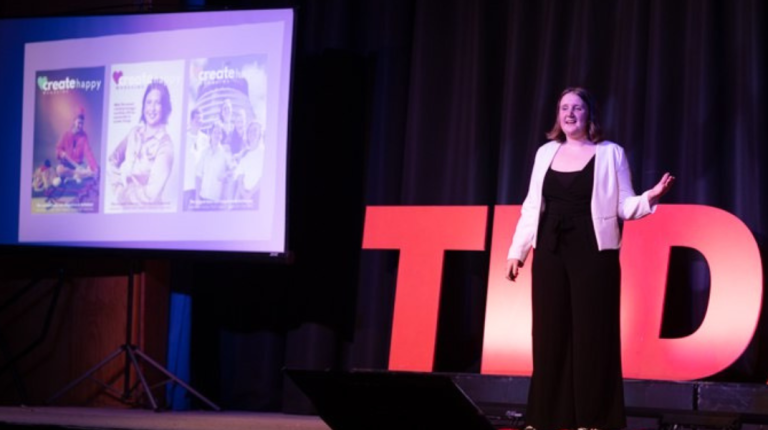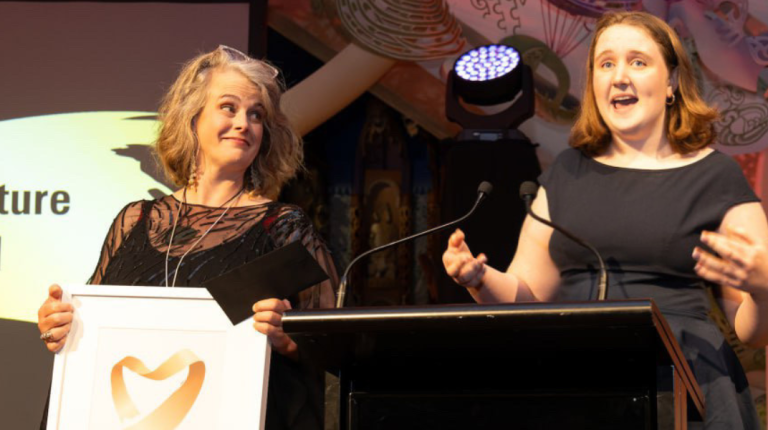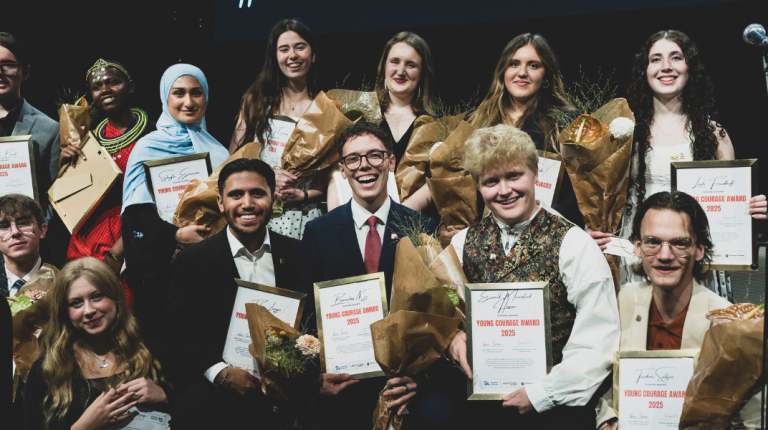A Journey from Youth Voice to Systems Change
I was 14 when I first sat in a room where adults actually wanted to hear what young people thought. I’d grown up watching older generations make decisions about young people with no young people in the room, so although I didn’t yet have the language to describe it - policy, representation, systems change - I understood how exclusion felt. That first time, where adults actually listened, where my contributions were taken seriously and turned into something actionable, was at Generation Hope.
“Empowered rangatahi empower rangatahi.”
Those were the words scribbled across a whiteboard in one of the very first brainstorming sessions, and I have never forgotten those words.
My year as a Youth Ambassador with Save the Children and Generation Hope completely transformed my outlook on advocacy work because it taught me early on how important it is to understand the different systems that impact us as young people. Understand it so you can move within them strategically, and–when necessary–build new ones.
Those systems show up everywhere, including in the way policy is written, in who gets invited to decision-making tables, in which stories are told by the media, in how funding is distributed, and even in how adults perceive young people’s capability. Before Generation Hope, I saw problems. After Generation Hope, I started seeing patterns.
That systems thinking gave me the ability to step back and notice how things connect. Why certain youth initiatives burn out. Why good ideas never reach scale. Why young people’s voices are often sidelined in policy. Understanding those patterns made me realise that changemaking needs to have a strong focus on redesign.
The Youth Policy Hackathon taught me how to work within government frameworks and find entry points for youth input. The Together We Have It All panel showed how bringing different youth movements into one space can build the kind of solidarity adults often spend decades trying to achieve. Tamariki Online! survey taught me how when data is driven by youth experience, can influence actual change. Over 1,000 young people spoke up about online harm, and those insights are now informing real safety policies at the highest government level. Generation Hope gave me access to decision-makers and networks. And it gave me the courage to believe that if a system doesn’t work for young people, we have every right to rebuild it.
When I talk about empowered rangatahi empower rangatahi, that’s what I mean. It is the act of transforming our collective position in society from being spoken for to being the ones who can speak for ourselves.
Generation Hope was, at its core, an experiment in what policy could look like when young people were involved from the start. But 3 years later, the programme has shown its value time and time again.

When I run into other alumni, there’s an unspoken recognition, the same drive to do the work and bring others with them. I think that is the real legacy of Generation Hope, not the politicians or press, but the chain reaction it set off in every one of us. You can trace a line through my story and see how that single truth repeats itself. The people who backed me made it impossible not to turn around and do the same for someone else. Every youth ambassador understands that their responsibility isn’t just to themselves, but to the rangatahi who come after us. We mentor, we support, we create opportunities. That is the effect of empowered rangatahi empower rangatahi. It’s a blueprint.
But that clarity also made it harder to ignore when things weren’t right. I remember sitting in a boardroom months after my time with Gen Hope ended, watching a youth consultation unfold where every word felt like it was pre-decided. The adults in the room nodded along as young people shared their views, but the agenda had already been printed. There was no space for disagreement, no follow-up or sense that anything said would shift the outcome of the work on the table. It was youth voice that had been stripped of power and turned into something empty. Tokenism often hides behind the language of collaboration.
It hit me then how rare Generation Hope was. How deliberate it had been about partnership and trust, how it had facilitated a space to fail and grow. And once you’ve experienced that it changes what you’re willing to accept.
So what has life looked like for me after being a youth ambassador? While I’ve definitely not stopped engaging with the incredible team at Save the Children, and offering my time to different projects that they’re working on, I have gone on to do some pretty epic things.
In early 2024, I helped launch Gen-Z Aotearoa, a national network built to strengthen youth-led organisations across the country. Too many of us were burning out, doing huge amounts of unpaid labour to hold up kaupapa that mattered, with no infrastructure behind us. Gen-Z Aotearoa grew from that frustration. We exist to make it easier for youth-run groups to survive and thrive, to share resources and build collective power.
By the start of 2025 I had really carved out a niche for myself in the world. I joined The Hive, a group of rangatahi working alongside government to bridge the gap between young people and policy. We consulted on health policy and social media regulation, worked with the Growing Up in New Zealand study, and submitted advice to Parliament.
This year I became the first New Zealander to receive the Raoul Wallenberg Young Courage Award, an international honour recognising young people who show moral courage in the face of injustice. In August, I travelled to Stockholm as one of thirteen recipients from across the world. The week was a blur of conversations that stretched from resistance to joy. Sitting in our hotel rooms after midnight, Miriam, an activist from Tanzania told me how her collective built a reusable pad initiative so girls could stay in school. She was seventeen. Barnabás, a student from Hungary student described what it meant to mass organise young people to run a student government, and Cleo from Greece ran virtual art workshops for elders to fight loneliness.
Boris from Serbia, helped to start one of the largest and most coordinated civic movements in the country's history when a railway station collapse killed sixteen people and the government refused to take responsibility, and Boris and thousands of young people took to the streets. They were met with tear gas, threats and silence from the adults who were meant to protect them. Hearing these young people each share their stories in was incredibly eye opening. Here were young people who had confronted repression head-on, whose bravery was measured in strategy and endurance.
Stockholm made me see a pattern. I was bearing witness to the ways young people across continents and contexts inhabit worlds in flux. They were encountering systems that failed them, cultures that marginalised them, economies collapsing, and politics that ignored them. And yet in every story I heard, there was adaptability. The world we’re entering is defined by velocity, technology, politics, the climate crisis, all shifting faster than institutions can adapt. The world we’re stepping into doesn’t wait for us to catch up. It’s volatile, deeply interconnected, and increasingly digital. Policy can’t move at the same speed as a global crisis anymore, but young people can, because they are fluent in change. And if that change is to be just and enduring, young people must not just have a seat at the table; we must be co-authors of the design itself.
And sitting in that room, surrounded by other young changemakers from across the world, I realised how much of my journey traces back to that first room where adults decided to listen.
That same phrase shows up in everything I do: empowered rangatahi empower rangatahi. It is not a nostalgic memory of a handwritten sentence on a whiteboard that I took a photo of and forgot about. It’s a strategy for change and it is one that continues to prove itself every single day.





